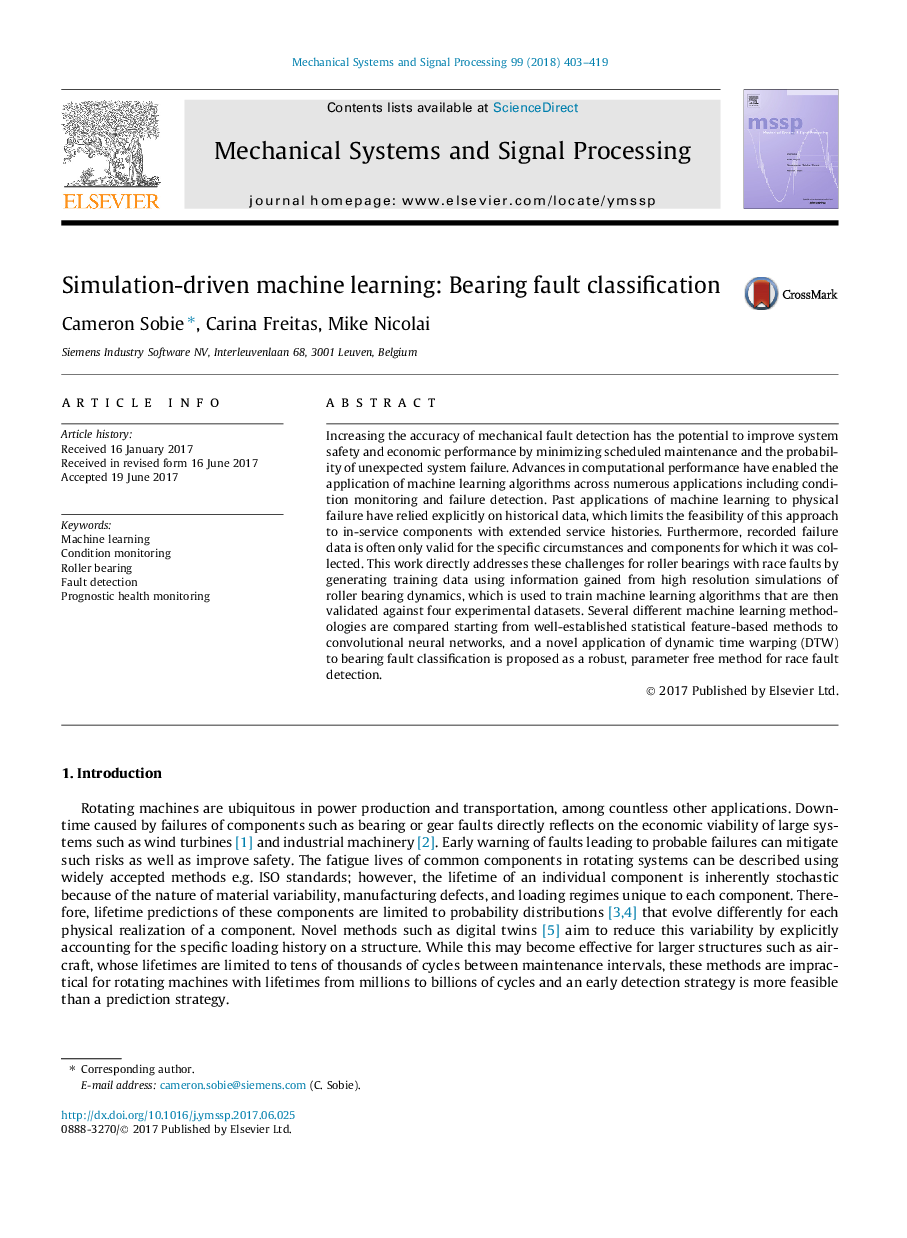| Article ID | Journal | Published Year | Pages | File Type |
|---|---|---|---|---|
| 4976760 | Mechanical Systems and Signal Processing | 2018 | 17 Pages |
Abstract
Increasing the accuracy of mechanical fault detection has the potential to improve system safety and economic performance by minimizing scheduled maintenance and the probability of unexpected system failure. Advances in computational performance have enabled the application of machine learning algorithms across numerous applications including condition monitoring and failure detection. Past applications of machine learning to physical failure have relied explicitly on historical data, which limits the feasibility of this approach to in-service components with extended service histories. Furthermore, recorded failure data is often only valid for the specific circumstances and components for which it was collected. This work directly addresses these challenges for roller bearings with race faults by generating training data using information gained from high resolution simulations of roller bearing dynamics, which is used to train machine learning algorithms that are then validated against four experimental datasets. Several different machine learning methodologies are compared starting from well-established statistical feature-based methods to convolutional neural networks, and a novel application of dynamic time warping (DTW) to bearing fault classification is proposed as a robust, parameter free method for race fault detection.
Related Topics
Physical Sciences and Engineering
Computer Science
Signal Processing
Authors
Cameron Sobie, Carina Freitas, Mike Nicolai,
